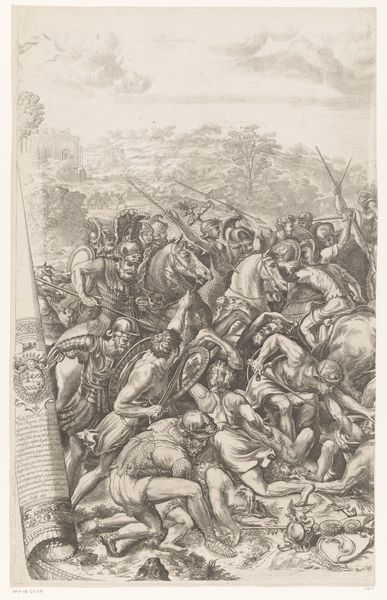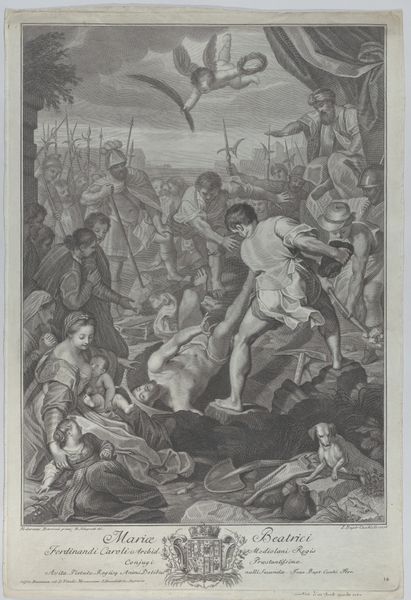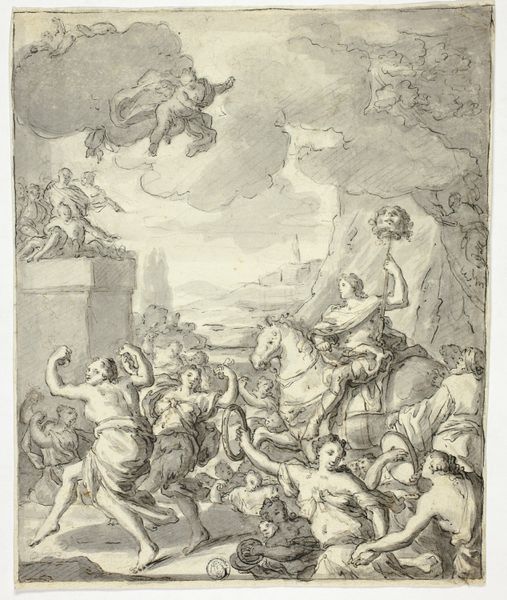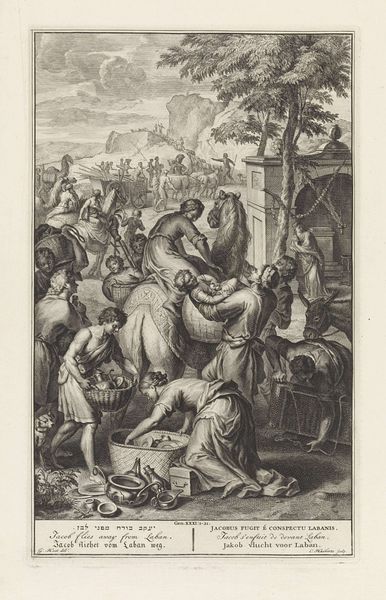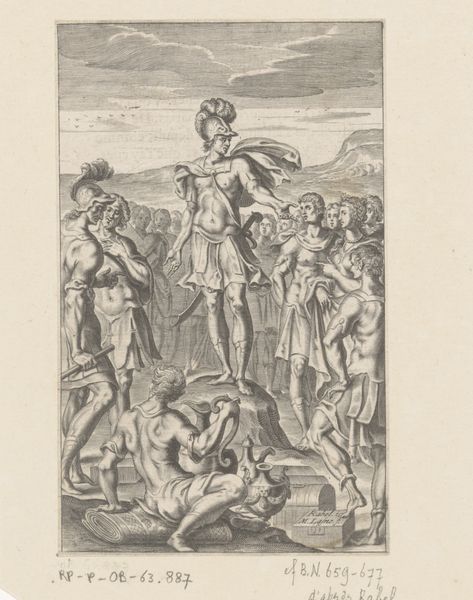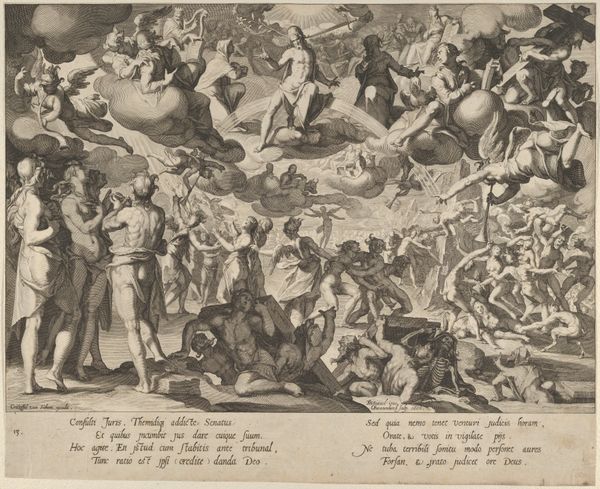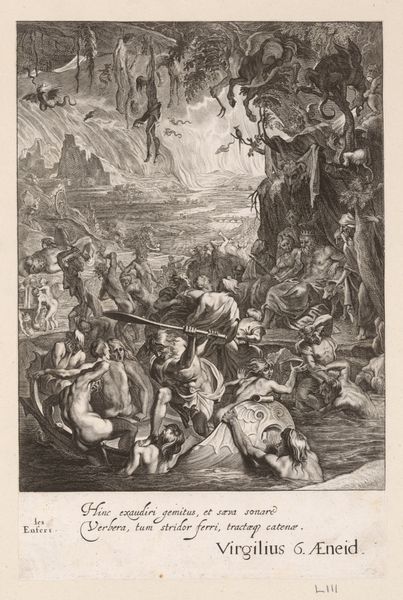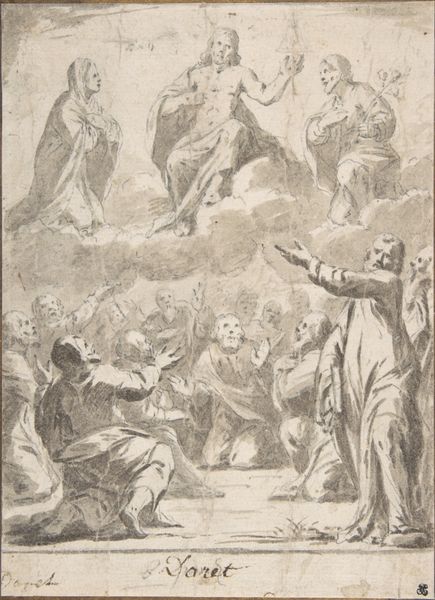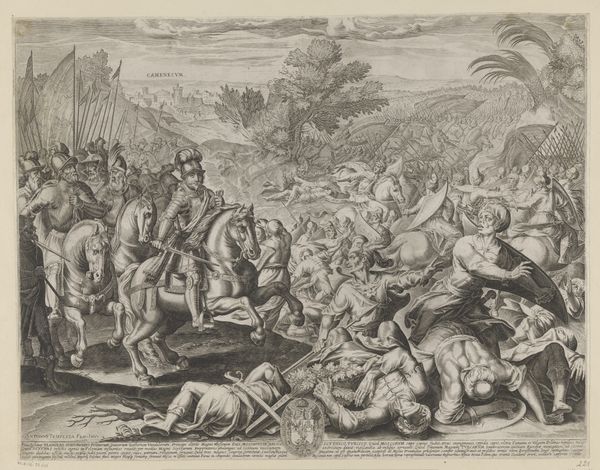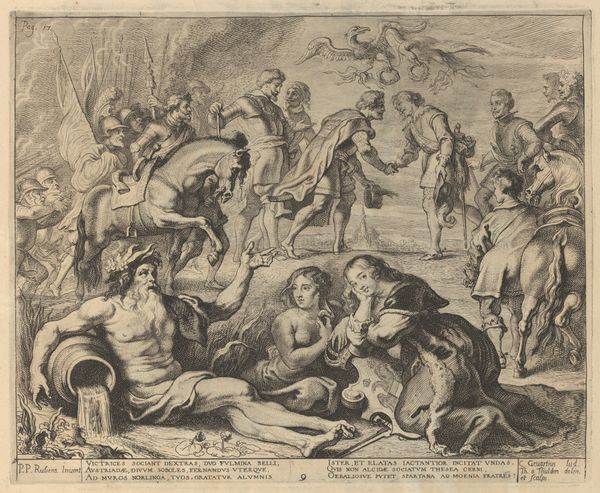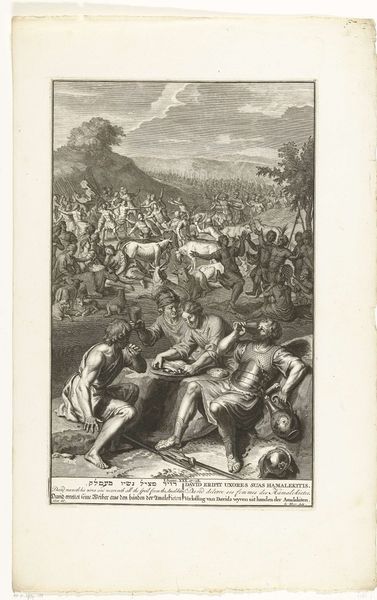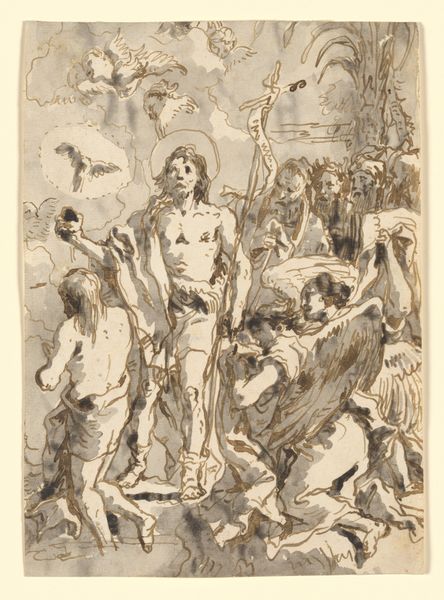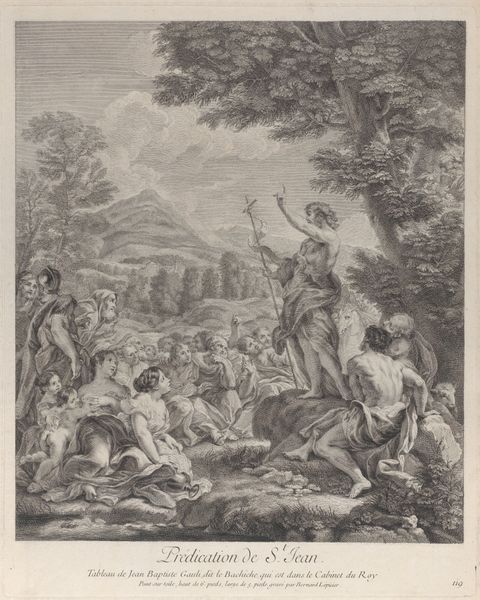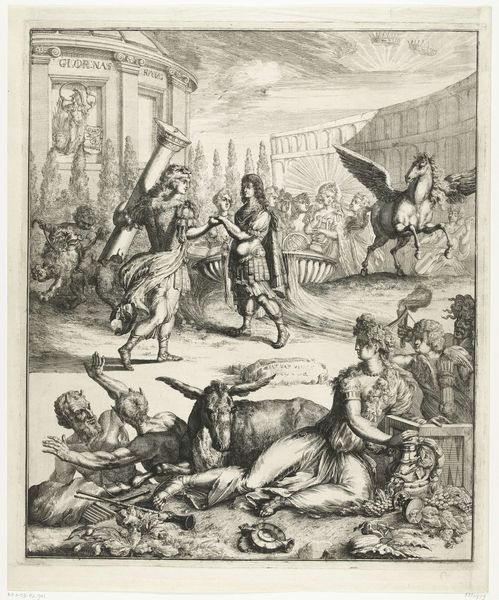
David verlost zijn vrouwen uit de handen van de Amalekieten 1658 - 1733
0:00
0:00
drawing, paper, ink, pencil
#
drawing
#
narrative-art
#
baroque
#
pencil sketch
#
landscape
#
figuration
#
paper
#
ink
#
group-portraits
#
pencil
#
sketchbook drawing
#
pencil work
#
history-painting
#
realism
Dimensions: height 322 mm, width 212 mm
Copyright: Rijks Museum: Open Domain
Editor: Here we have Gerard Hoet’s drawing in ink and pencil, “David freeing his wives from the hands of the Amalekites,” created sometime between 1658 and 1733. It looks like a very busy composition; what details stand out to you the most? Curator: I immediately notice the stark contrast between the celebration scene depicted above, filled with people and livestock, and the figures in the foreground who seem to be relaxing and celebrating a victory. We see them consuming food and drink with discarded armour, almost as a still-life amidst this chaotic scene. Editor: Interesting. It feels like we're looking at two different paintings combined into one. What's the relationship between these distinct groupings in terms of materials and what's being portrayed? Curator: Considering the social context, Hoet’s choice to focus on these men points to a commentary on power and its privileges. Their relaxation is enabled by the actions in the background, hinting at a dependence on labor and potential violence. How is the wealth distributed in the spoils? What does the presence of arms tell us about that? Editor: So it's not just a historical scene, but an exploration of the system that allows that scene to occur. How do the materials—ink and pencil on paper—contribute to that message? Curator: Exactly! The use of drawing implies planning. Preliminary sketches act as sites of possibility where we must examine intention as a core tenant of the value for finished products. Editor: So, analyzing the material of this drawing helps us to think about intention in its creation, as well as reflect on the artist’s social position and assumptions. Thanks for breaking that down. Curator: Precisely. By investigating the materials, means of production, and distribution within art we reveal larger social and cultural narratives, turning artistic creation into a material examination.
Comments
No comments
Be the first to comment and join the conversation on the ultimate creative platform.
